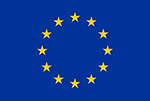
Elucidating metabolic dependencies in cancer cell lines using constraint-based modelling
Ponce-de-Leon M, Valencia A - X International Conference on Bioinformatics - Montevideo, 28-30th October 2019
Abstract
Metabolic reprogramming is one of the earliest described hallmarks that take place during the transformation of cancer cells. Cancer cells adjust their metabolism to satisfy the demand for energy and biomass precursor required by a proliferative phenotype. The reconstruction of the first genome-scale model of human RECON1 (Duarte et al. , 2007) opened the possibility to simulate human cell metabolism using constraint-based methods. The RECON1 or its latest version Recon3D include all enzymatic reactions and transporters encoded in the genome. However, different cell types express different enzymes and thus the model needs to be contextualized using cell type-specific omic data (Opdam et al. , 2017). Context-specific models are particularly suitable for studying metabolic differences between healthy tissues and cancer cells, and to predict metabolic vulnerabilities in tumours (Agren et al. , 2014). Nonetheless, these methods do not adjust the biomass composition of the cell to fit the demands specific to different cell types and this can lead to prediction errors. Herein we first showed how changes in the biomass definition lead to differences in the prediction of essential genes. We then introduce a novel method to elucidate the dependency between predicted essential gene and the metabolites present in the biomass definition. To elucidate metabolic dependencies specific to each cancer cell line, we apply our approach to the latest human metabolic model and combine these results with CRISPR–Cas9 gene essentiality screens and gene expression data from ~560 cancer cell lines from the Cancer Dependency Map (Meyers et al. , 2017). The results showed that most of the universal precursors included in the biomass definition (e.g.nucleotides and membrane lipids) are connected to in-vivo essential genes in the majority of the analyzed cancer cell lines. On the contrary, other metabolites also present in the definition seems to be dispensable in most of the considered cell lines. Finally, we found a group of metabolites that appear to be essential only in subgroups of cell lines. Altogether, we showed that the proposed approach can be used to adjust the biomass equation to specific cancer cell lines and ultimately to improve model predictions.
